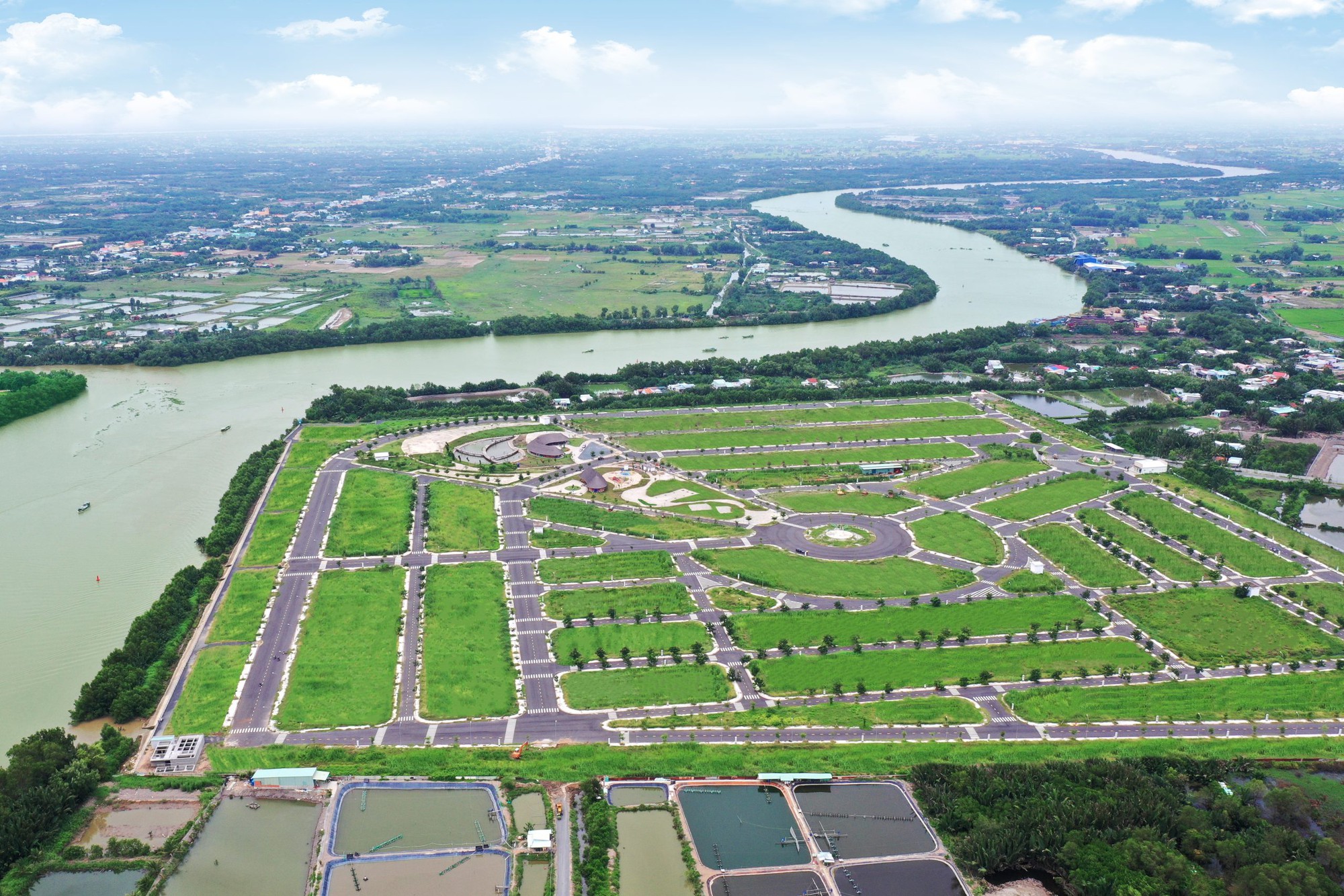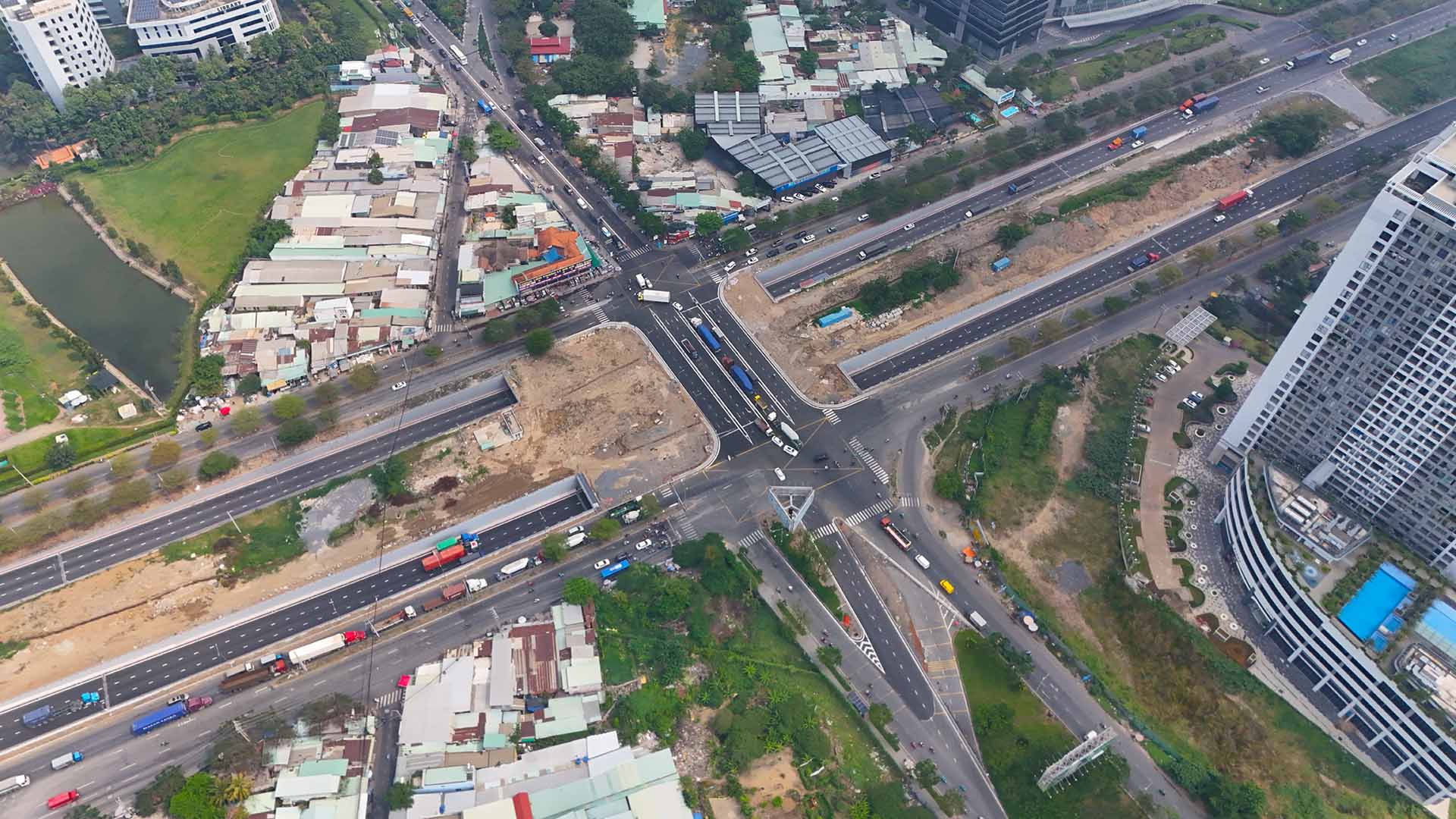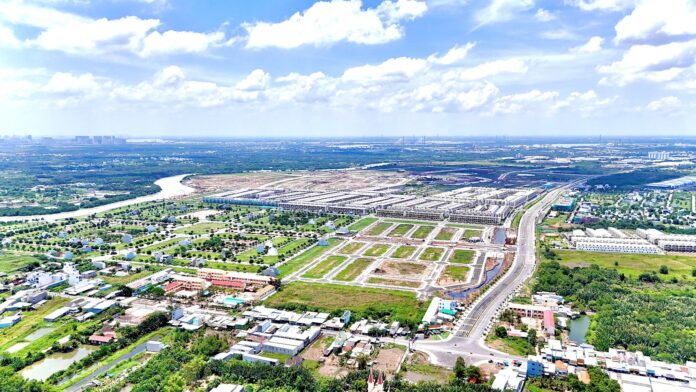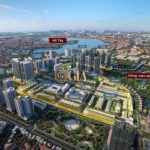
Investors are marching south in search of legal and infrastructure-complete projects
Right after the Lunar New Year holiday, the land plot segment heated up in the eastern region of Ho Chi Minh City. Areas such as District 9 (Thu Duc City, Ho Chi Minh City); Nhon Trach and Long Thanh (Dong Nai); Di An and Thuan An (Binh Duong); and Phu My (Ba Ria-Vung Tau) continuously witnessed vibrant investment and trading activities. Currently, transactions in these areas are showing signs of slowing down, but prices have formed a new level.
Investors are starting to look for opportunities in potential neighboring markets. The southern region of Ho Chi Minh City, including Long An, is becoming an attractive destination for investors – a place with soft land prices, continuously invested and expanded infrastructure, and convenient connections to the city.
Recently, some land projects in Can Giuoc and Duc Hoa (Long An) have shown signs of revival. Investors from Ho Chi Minh City and neighboring areas, even those from the northern region, have started to pay attention to projects with clean legal status and synchronous infrastructure.
For example, at the Long Hau frontage, the The 826 EC project by Hai Thanh investor, although not officially launched, has received quite positive attention from customers. With a price of 35 million VND/sqm – a price that is hard to find in the eastern market of Ho Chi Minh City, and located on the frontage of two provincial roads DT826C and DT826E (Long Hau – Can Giuoc), near large urban projects such as T&T Millennia City and Vinhomes Phuoc Vinh Tay; and adjacent to key transport infrastructure projects under construction, the project has attracted the attention of buyers.
In the same area, the Saigon Village project, which was sold earlier at a starting price of 525 million VND/plot in 2016, now has many residents. Even though it has been sold for a long time, the project still receives quite a lot of attention from investors in the secondary market. The price has increased fivefold compared to the launch time. This shows that the scarcity of new land supply in the Long Hau area has been driving transactions in existing projects.
Previously, the Saigon Riverpark land project, located on Truong Van Bang frontage, Tan Lap (Can Giuoc), also continuously succeeded in sales launches. With a price of around 640 billion VND/plot, ready-to-handover red book and completed infrastructure, the project attracted investors from many areas. Currently, the secondary price of this project has increased by about 3.5 times compared to the launch time, reaching about 2.2 billion VND/plot.

Investors are marching south, hunting for legal land plots adjacent to Ho Chi Minh City.
According to practical observations, not only long-term investors but also new investors (F0) are actively looking for land plots in the southern region of Ho Chi Minh City. Plots priced from 2 to 3 billion VND near key infrastructure projects under construction are the most sought-after. They expect that with reasonable prices compared to developed markets and increasingly convenient connections between Long An and Ho Chi Minh City, real estate in the south will have strong potential for price increases in the future. The fact that investors are actively exploring land projects in Can Giuoc and Duc Hoa shows that investment capital is gradually shifting to areas with much growth potential in the coming time.
Riding the wave of infrastructure development
Previously, investors had shown a tendency to seek residential land in the southern region of Ho Chi Minh City, but this trend was not clear. Now, as infrastructure is improving, many investors recognize the area’s potential. However, not all projects in the south attract attention. Only those close to Ho Chi Minh City, with a travel time of about 20-30 minutes to the center via existing routes, are of interest. Meanwhile, projects far from the center have slow liquidity.
Recently, land projects in Long Hau, Tan Lap, and Hau Nghia (Long An) have been in the spotlight. Besides reasonable prices, these projects also benefit directly from the transport infrastructure being invested and expanded.

Infrastructure development in the south is creating momentum for the real estate market recovery. (Illustrative image)
One of the notable projects is the parallel route of National Highway 50, which is now about 90% complete and expected to open by the end of this year. This important transport infrastructure project connects Ho Chi Minh City, Long An, and Tien Giang. The project is about 88km long, with an investment of nearly 1,500 billion VND, starting from Nhien Thanh Bridge (District 8) through Can Giuoc district (Long An) and ending at Lo Dua (Tien Giang).
After completion, the expanded National Highway 50 will play a crucial role in enhancing transport capacity and promoting economic linkages between Ho Chi Minh City, Long An, and southern localities. The route will also directly create a wave of housing price increases along the area, such as Da Phuoc and Phong Phu (Binh Chanh), Long Hau, and Tan Lap (Can Giuoc).
In addition, Nguyen Huu Tho route, which is about to be widened to 60m corresponding to 10 lanes, will form a transport axis connecting Ring Road 2 with Ben Luc – Long Thanh Expressway and, later, Ring Road 4 of Ho Chi Minh City. This will meet the inter-regional transport needs of the southern gateway area of the city with the eastern and western southern provinces and the system of seaports and Long Thanh airport.
Thanks to this route, people in Nha Be and Can Giuoc – Long An will not only have a broader and more convenient path to the center of Ho Chi Minh City, but the real estate prices in the area are also expected to increase sharply in the future. According to forecasts by experts, land prices along these routes may increase by 30-70% in the next 3-5 years.
Additionally, a series of key transport infrastructure projects with inter-regional connectivity, such as Ring Road 3, Ring Road 4 of Ho Chi Minh City, Ring Road of Tan An City, Ben Luc – Long Thanh Expressway, Tan Lap – Long Hau Road (DT826D), DT823D, DT830E, DT827E, and DT830, are continuously promoted. These investments contribute to changing the urban landscape and creating momentum for the socio-economic development and the real estate market in the southern region.
Among them, the Tan Tap – Long Hau Road (DT826D) is one of the eight breakthrough transport projects approved. The project is planned to connect Ring Road 4 of Ho Chi Minh City to DT830, enhance regional connectivity, and create momentum for the real estate market. It is expected to be implemented in the 2026-2028 period with public investment capital.
DT830 runs through key industrial development areas of the province, from Duc Hoa to Ben Luc, Can Duoc, and Long An International Port, with a length of 55km. Once completed, the project will be the main axis connecting industrial parks, industrial clusters, and urban areas with entertainment, commercial, and service functions in Long Hau commune (Can Giuoc district). In the future, this route will connect to National Highway 50 to Long Hau Industrial Park and Nguyen Van Tao Street (Ho Chi Minh City), forming a continuous transport axis from the west to the south of Saigon to Can Giuoc (Long An).
It can be seen that infrastructure not only solves the problem of inter-regional connectivity but also provides a significant growth driver for the real estate market in the southern region of Ho Chi Minh City. The “going before welcoming” behavior of investors demonstrates their sensitivity to planning and infrastructure information and their long-term profit vision.
Purchasing a Villa in Ciputra: Embrace a Luxurious Lifestyle with Flexible Payment Options up to 36 Months
“GIA by KITA, a renowned real estate investor and project developer, has unveiled new sales policies for June 2025. These policies offer attractive payment options for prospective buyers interested in their premium villa offering, GIA22, located in the heart of Tay Ho District, Hanoi. “
The Four Infrastructure Pillars to Reach in 2025 and the Boost for the Real Estate Market
The completion of key infrastructure projects, including the Tan Van Interchange, Ring Road 3, Long Thanh Airport, and the Bien Hoa-Vung Tau Expressway by the end of 2025, is having a profound impact on the real estate market. These developments are reigniting investment flows, particularly in areas with direct links to this new infrastructure.














































